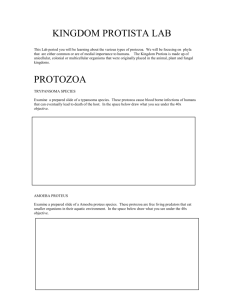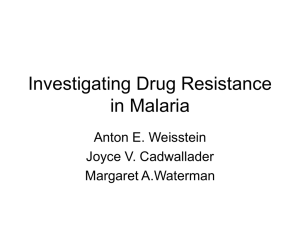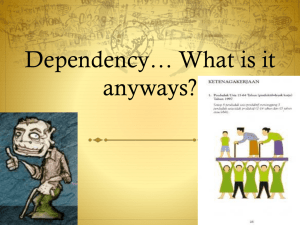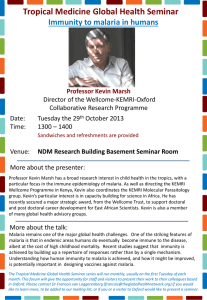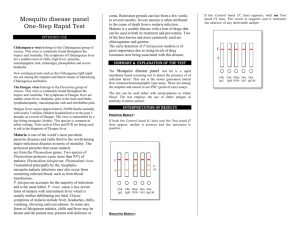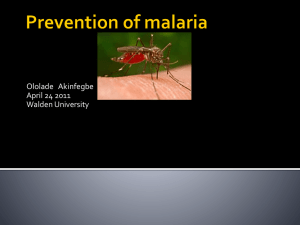pptx - NIMBioS
advertisement
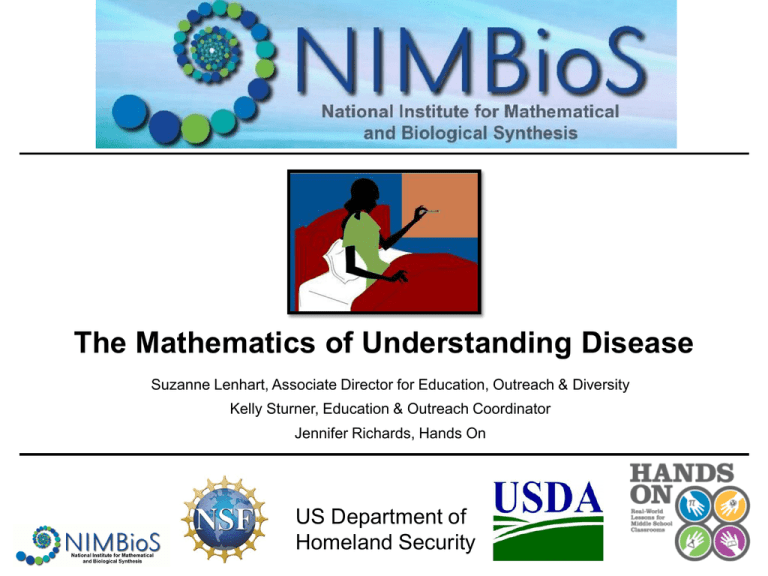
The Mathematics of Understanding Disease Suzanne Lenhart, Associate Director for Education, Outreach & Diversity Kelly Sturner, Education & Outreach Coordinator Jennifer Richards, Hands On US Department of Homeland Security By the end of this module, you will … • Understand how mathematicians and biologists can build mathematical models to simulate disease outbreaks. • Use real world health data to learn and share something you choose about malaria. How can we quantify how fast a disease spreads? Basic Reproductive Number = Ro • Expected number of secondary cases produced by a single infection in a completely susceptible population. • If Ro > 1, disease spreads R0 for some infectious diseases • • • • Measles 12-18 Mumps 4-7 HIV/AIDS 2-5 Influenza 2-3 Outbreak in a Cup: Set Up Set up the Initial Conditions: 20 red beans 1 white bean Outbreak in a Cup 1. Without looking in the cup, a student from the group selects 2 beans from the cup. 2. If both beans are the same color, simply return the beans. 3. If one bean is red and the other white, remove the red bean and return 2 white beans to the cup. 4. At each time step, record the event that occurs: either no change or a new infection. 5. Repeat the process until told to stop. Share! • Did groups show different patterns in how the outbreaks occurred? Why or why not? • How is this disease model similar to what happens in the real world? • What aspects could we add to modify our simple model? • What would you estimate is the R0 of this disease? Susceptible Infected What do we mean by a Mathematical Model? Occam’s Razor Real World Interpret and Test Model World Your Big Question Model Results “A Purposeful Representation of Reality” Model Figure from “A Course in Mathematical Modeling” by Mooney & Swift Math Some ways to add to this model … Susceptible Infected Dead Can you think of more? How would you represent them? How could you represent these with math? Recovered (Immune) What is Malaria? • Components involved in malaria: Parasite: Agent that causes the disease Human: Host (suffers from the disease) Mosquito: Vector that transmits the disease from human to human • Vector-borne disease Cause: Plasmodium falciparum, Plasmodium vivax, Plasmodium malariae, Plasmodium ovale Plasmodium falciparum is the most dangerous species • Transmission: Female mosquito Male and female mosquitoes feed on nectar and plant juice Female mosquitoes need blood for reproduction • Gapminder is a free data exploration and visualization tool • Lots of world data from sources such as WHO, FAO, others are loaded into it • Use it to find your own interesting trends Getting Started • Watch the introductory video: http://www.gapminder.org/videos/200-years-that-changed-the-world-bc/ • Open Gapminder World • Check out the tutorial on the next slide (or click “How to Use”) • Use the spreadsheet to start thinking about malaria From Gapminder World Website Share Your Findings Effects of Malaria • Effects range from mild to fatal, including cerebral malaria • About 1.24 million deaths in 2010 (Murray et al. 2012) • In Africa, a child dies every 45 seconds of Malaria • Malaria prevalence is high in developing countries due to: poverty, human behavior, poor sanitation, inadequate drainage, drug resistance, etc. • Malaria has a negative impact on economic growth. • People moving from regions without malaria to regions where it is present are more at risk For This Module & More … • Website: www.nimbios.org • Sign up for our bimonthly email newsletter • Check our blog Acknowledgements Disease modeling activity adapted from: • Jungck, J.R., Gaff, H. and A.E. Weisstein. 2010. Mathematical Manipulative Models: In Defense of “Beanbag Biology”. CBE-Life Sciences 9(3): 201-211. Slides on Malaria disease adapted with permission from: • Dr. Calistus Ngonghala, NIMBioS postdoctoral researcher And for the excellent data tool, video, tutorial resources: • Dr. Hans Rosling and www.gapminder.org This module developed and piloted for: • Tennessee Junior Science and Humanities Symposium 2012

